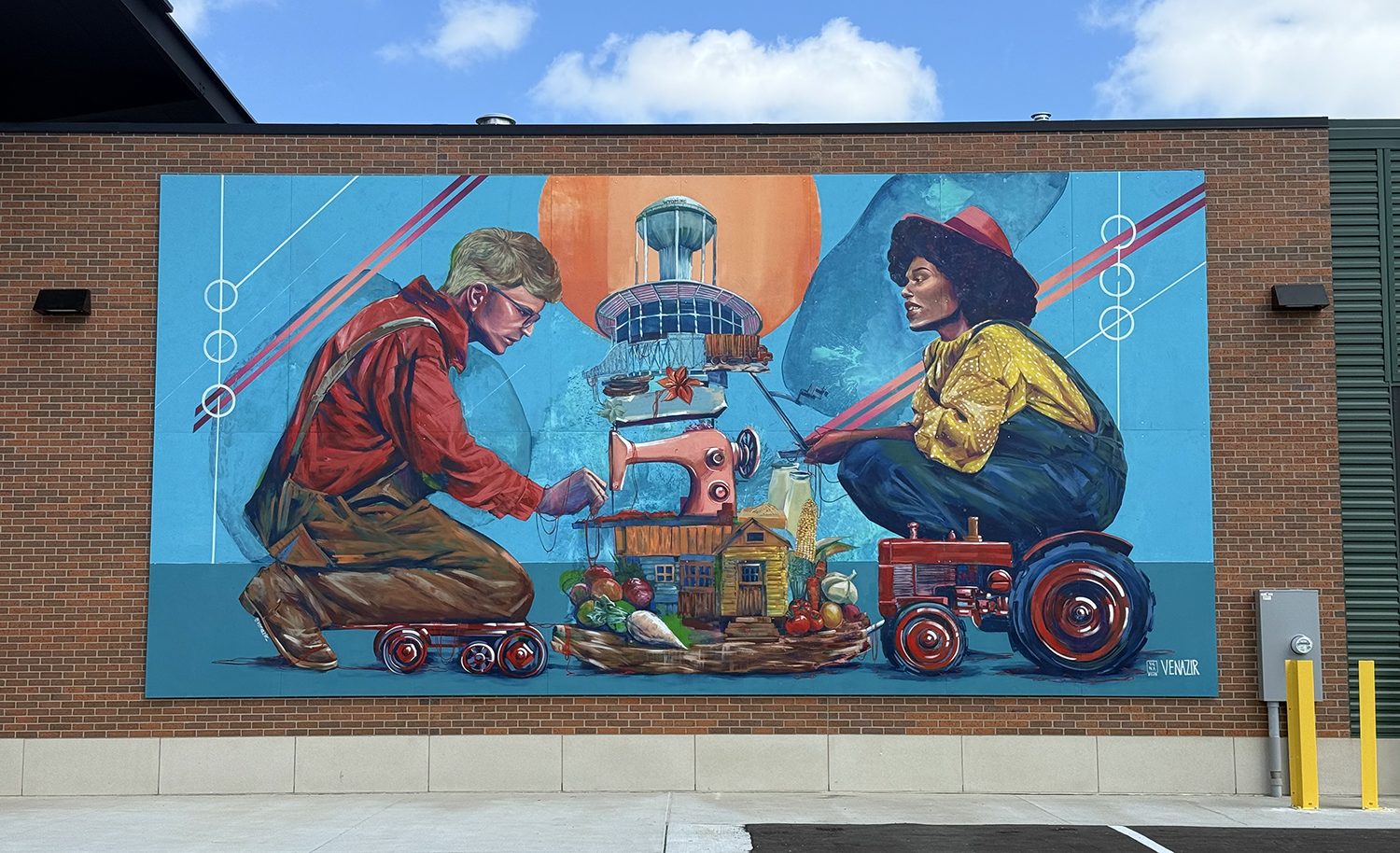May, Come She Will
/A Santacruzan parade in Noveleta, Cavite (Photo by Ramon F. Velasquez/Wikimedia Commons)
For those who have spent part of their lives in the Philippines, May is just as much a month of flowers and sunshine. When we were kids, we would spend part of our afternoons stringing garlands of calachuchi (frangipani) and sampaguita, or arranging bouquets out of the many blooms around us. Then we would walk to church for the daily service called Flores de Mayo that involved saying the rosary and some prayers to the Virgin Mary before lining up to offer our individual floral creations. While the priest would often remind us that any offering will do, that even a blade of grass is welcome, we would always try for the best combination of colors and smells not just to honor the Virgin Mary but to titillate our senses. In our young hearts, nothing was more satisfying than to press one’s nose on a colorful bouquet of subtle fragrances.
There was one time when we dared go beyond the yellow bells, the red gumamelas, and the violetas that were always within our reach, and aspired for the fiery orange blossoms of the caballero trees that lined a street in the UP campus. Those were old trees, see, and in their full glory they formed a canopy that was an explosion of color so intense, we could only compare it to fire. Like moths to flame, we were drawn to them, despite the warnings of the adults and the danger posed by the buses that plied that route.
The day when we just had to have some of the flowers for our Flores de Mayo, we went as a group. One guy who was older and bigger than most of us was in charge of climbing a tree and cutting off branches – those that had the most blossoms, we instructed. Others brought long poles to prod the more fragile stems to break. The rest of us were in charge of catching the falling flowers. A fine enough arrangement except that we did not realize until it was too late that the fire trees were laden with higad, those tiny, furry worms that hang on trees and make any human who comes in contact with even just one, itch like crazy. By the time we got our flowers, all of us were scratching and swollen. I don’t remember if anyone made it to the Flores de Mayo that afternoon; I’m not even sure if we managed to bring our hard-earned loot home. It was an early lesson for us that so much beauty can also bring so much misery.
May back home is also the month of the Santacruzan, an elaborate procession that has been transformed in the past decades into a showcase of wealth, a fashion show for aspiring couturiers, and a beauty pageant, all in one. In many instances, the religious intent is overshadowed by the secular ostentation, something that I always thought the Catholic Church should object to except that such displays of extravagance must also mean a proportional increase in its coffers.
To those of us with provincial roots, this month always brings nostalgia for the fiestas. A number of important saints – notably San Isidro, the patron saint of farmers – have their feast days in May, thus many normally sleepy towns explode in once-a-year revelry. A town fiesta is enough reason to go home, not just for those who have moved to different areas in the Philippines but especially for expats and those who want to witness Philippine culture at its most hospitable.
For strangers in the town who are just there to enjoy the proceedings, a fiesta can be a feast of the senses. There would be church bells peeling at various times, loudspeakers blaring music and/or the yells of peddlers, raucous public dances in the plaza, stage shows featuring aspiring local singers and comedy skits by midgets, cockfights and the accompanying roar of the crowd, ferris wheels and mini roller coasters eliciting screams, and booths featuring various strange games that would involve such oddball elements as white mice and spiders. Because May is the height of summer, there would be vendors displaying juices and ice cream of various tastes and hues, scooped out into glasses cursorily dipped in a basin of already foggy water. Then of course there is the food: everyone is expected to go to each house, even of strangers, to partake of the fare the hosts spent a year saving for. It would be rude not to eat and rudeness is a no-no during fiestas, when townsfolk and visitors alike forget about decorum and reserve, and allow themselves to be swept into the rhythm of the Bacchanalian celebration.
For former residents going home to visit, the annual fiesta is almost like a spiritual retreat, a time for grounding. No matter how far they have gone from their former lives, there is always the thrill of looking up those who stayed behind and returning to the rituals that used to bind them to each other. I have always been envious of how my brother and sister could naturally slip into the slow beat of life in our father’s hometown and start conversations with their old friends like the interruption happened yesterday, not decades before. Since I’ve never spent more than a week there, I was always the semi-stranger who was treated royally but could never share the nuances of life in the town.
Yet when May comes around, I inevitably look back with fondness to the fiestas I’ve been to and the towns that hosted them, knowing deep in my heart that when the time comes for me to embrace a quiet life, those are the places I will return to and finally call my home.
From Heart In Two Places: An Immigrant’s Journey (Anvil Publishing, 2007)



